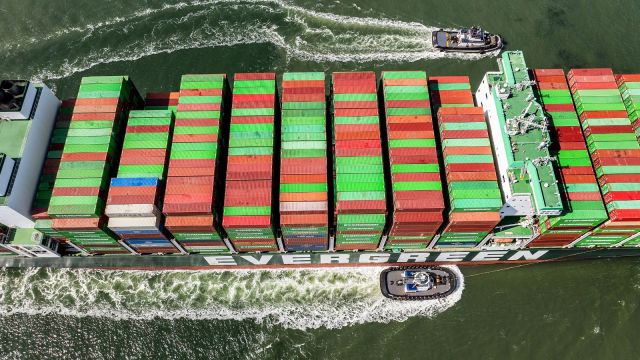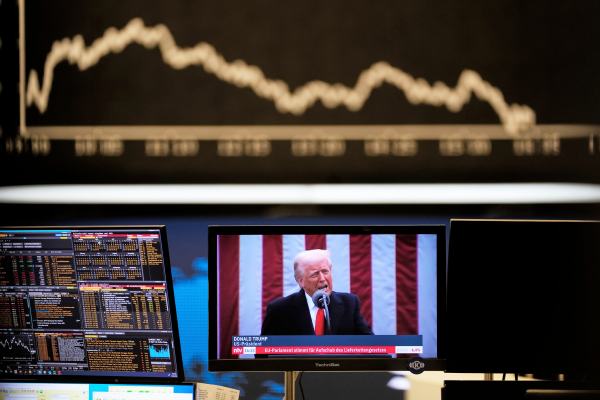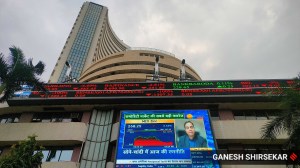Trump’s ‘baseline’ tariffs kick into effect leaving trail of market destruction, and trade war tensions
‘Baseline’ 10% import levy takes effect at US seaports, airports and customs warehouses on Saturday, with some higher tariffs to begin next week
 Trump’s announcement of the tariffs on Wednesday shook global stock markets to their core, wiping out $5tn in stock market value for S&P 500 companies by Friday’s close, a record two-day decline. (AP)
Trump’s announcement of the tariffs on Wednesday shook global stock markets to their core, wiping out $5tn in stock market value for S&P 500 companies by Friday’s close, a record two-day decline. (AP)At 12:01 am Eastern Time on Saturday, US customs officers began collecting Donald Trump’s sweeping new 10 per cent “baseline” tariff on imports, triggering what economists are calling the most dramatic shift in American trade policy since the Second World War.
But this is only the opening volley.
On April 9, even more punishing levies—ranging from 11 per cent to a staggering 50 per cent—will hit goods from 57 nations, including key US allies such as the UK, Japan, India and the entire European Union. The ripple effects are already slamming global markets, shaking investor confidence, and testing diplomatic ties worldwide.
“This is the single biggest trade action of our lifetime,” said Kelly Ann Shaw, a trade lawyer at Hogan Lovells and former White House trade adviser under Trump, Reuters reported. Speaking at a Brookings Institution event, Shaw added, “This is huge. This is a pretty seismic and significant shift in the way that we trade with every country on earth.”
Global markets shudder, China hits back
Just days after Trump unveiled the move, markets plunged. By Friday evening, $5 trillion had been wiped from S&P 500 companies alone in a historic two-day slide. Oil and commodity prices nosedived. Investors ran for cover in government bonds.
Then came retaliation.
China, facing a 34 per cent tariff that pushes total US duties on its goods to 54 per cent, announced it would match the move and impose its own 34 per cent levy on American exports from April 10. Beijing also plans to file a case against the US at the World Trade Organization and restrict exports of rare earth metals—critical for electronics and medical technology.
Trump’s response was blunt. “China played it wrong,” he posted on Truth Social. “They cannot afford to do this.”
Still, most other US trading partners appear to be watching and waiting, trying to gauge how deep the standoff might go and what it could mean for the global economy.
Exemptions are narrow but not risks
Despite the sweeping nature of the tariffs, there are carve-outs—for now.
More than 1,000 product categories are temporarily spared, including crude oil, energy imports, semiconductors, pharmaceuticals, copper, titanium, lumber and uranium. These accounted for $645 billion of US imports in 2024. Yet many of these sectors—aside from energy—are already under review for potential “national security” tariffs.
Steel, aluminium, cars and car parts, already covered by separate 25 per cent duties, are also exempt from the latest round.
Canada and Mexico are not part of this new tariff regime. But that doesn’t mean they’re off the hook. They’re still subject to existing 25 per cent tariffs for goods not aligned with the US-Mexico-Canada Agreement, tied to concerns over immigration and fentanyl trafficking.
Vietnam, which had gained from the earlier shift in US supply chains away from China, now finds itself in the crosshairs. A hefty 46% tariff is on its way. After Trump’s announcement, Hanoi agreed to talks to avoid a protracted dispute.
No grace period, limited relief
For most countries, the new rules landed hard.
Among the first to feel the pinch are Australia, Britain, Colombia, Argentina, Egypt and Saudi Arabia. A US Customs and Border Protection bulletin confirmed there would be no grace period for cargo already at sea when the tariffs took effect.
There is, however, a narrow window for relief. Goods that were already en route by the Saturday deadline have until 12:01 am ET on May 27 to arrive, or they too will be taxed at the new 10 per cent rate.
Oxford Economics predicts that Trump’s new trade policy will raise the average US tariff rate to 24 per cent—higher than during the Great Depression. “If they can’t get a reprieve,” the firm warned, “they are likely to retaliate, as China already has.”
Eric Trump, one of President Trump’s sons, meanwhile, weighed in on the unfolding trade standoff with a stark warning to America’s trading partners.
 US President Donald Trump appears on a television screen at the stock market in Frankfurt, Germany, Thursday, April 3, 2025. (AP Photo/Michael Probst)
US President Donald Trump appears on a television screen at the stock market in Frankfurt, Germany, Thursday, April 3, 2025. (AP Photo/Michael Probst)
“I wouldn’t want to be the last country to try to negotiate with @realdonaldtrump,” he posted on X. “The first to negotiate will win — the last will absolutely lose. I have seen this movie my entire life.”
The comment came as former President Trump signalled a willingness to engage in dialogue — despite his administration’s firm line.
Speaking to reporters aboard Air Force One on Thursday, Trump said: “Every country has called us. That’s the beauty of what we do, we put ourselves in the driver’s seat. As long as they are giving us something that’s good.”
He pointed to ongoing talks over the sale of TikTok as an example: “We have a situation with TikTok where China will probably say, ‘We’ll approve a deal, but will you do something on the tariffs?’ The tariffs give us great power to negotiate. They always have,” he added.
Retaliation brewing in Europe and Asia
The staggered rollout of tariffs allows time for negotiation. But experts believe some countries won’t wait long to strike back.
“If they can’t get a reprieve, they are likely to retaliate, as China already has,” warned a report by Oxford Economics.
The European Union has made its displeasure clear. Trade Commissioner Maros Sefcovic said the bloc would act in “a calm, carefully phased, unified way” but added it “won’t stand idly by.” France, Italy and Germany have suggested the EU could hit back with taxes on major US tech firms.
Japan’s Prime Minister urged a “calm-headed” approach after the US slapped a 24 per cent tariff on Japanese goods. Trump, meanwhile, claimed a “very productive” call with Vietnam’s top leader after unveiling the 46 per cent tariff on the Southeast Asian exporter.
Israeli PM Netanyahu is also expected to meet Trump in Washington this week to discuss reciprocal tariffs, according to Israeli officials, though his office has not confirmed the visit.
A return to old trade wars?
With these moves, Trump has formally rejected the post-WWII system of mutual tariff setting. Instead, he’s invoking emergency economic powers to pursue what he calls “reciprocal” trade. The White House blames America’s ballooning trade deficits on unfair value-added taxes and a lack of balance in global deals.
But critics warn this isn’t just about economics—it’s about power.
The scale of Trump’s tariffs is raising historical comparisons. According to the Center for Strategic and International Studies, the new levies represent “the most sweeping tariff hike since the Smoot-Hawley Tariff Act,” a 1930 law widely blamed for deepening the Great Depression.
And the numbers are staggering. Oxford Economics estimates that the average effective US tariff rate will soon rise to 24 per cent. That’s higher than at any point in the last century—even in the 1930s.
For now, Trump’s message is clear: this is not a negotiating tactic. It’s policy. But with inflation fears growing, global supply chains under pressure, and markets reacting sharply, the full consequences of this strategy may take months—or years—to unfold.
Trump, however, remains unmoved. “My policies will never change,” he wrote on his social platform.
For the rest of the world, the question now is: fight, fold, or wait it out? Because the tariffs are here, the clock is ticking—and the costs are already being felt.
(With Inputs from Reuters, AP)
Must Read
Buzzing Now
Apr 11: Latest News
- 01
- 02
- 03
- 04
- 05

























